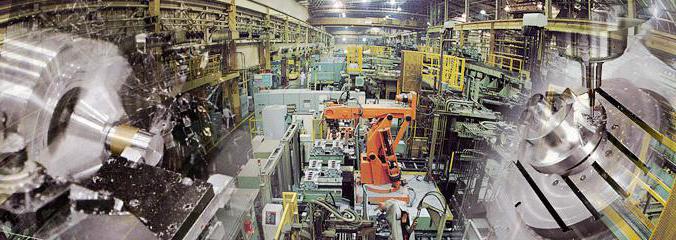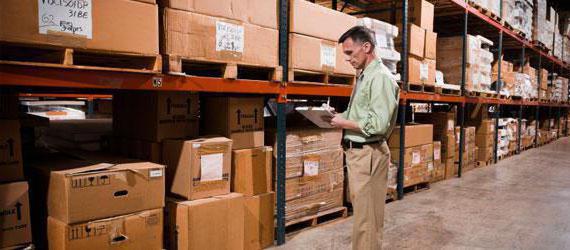Fixed assets - property of the organization, which is used in the process of activity for a period of more than 1 year. Most often they are subject to write-off in a condition that is not able to bring benefit to the company. Cases of this type include:
- Expiration of the recommended period of operation;
- premature wear;
- damage to property in connection with an emergency or inventory;
- sale or exchange of assets.
OS accounting
Registration is carried out at initial cost, which includes direct costs of fixed assets and the amount transferred to the supplier. It is worth noting that the initial cost does not include VAT.

The depreciation cost is calculated for the term of operation, which the accountant deducts every month to the appropriate account. The amount of fixed assets minus depreciation, which is called book value asset.
OS liquidation due to expiration of use
Each property has its own useful life, be it a building or industrial equipment. An entity may write off property, plant and equipment later. Postings during liquidation after the end of the period recommended for operation and immediately after its occurrence do not differ.
Characterize the write-off of the fixed assets object carried out by the accountant. It is assumed that the amount of the asset’s value is fully carried forward. This statement confirms the zero final balance on account 01 after the transaction, which does not require additional quotes to write off balances.
Write-off of fixed assets - postings
The liquidation of assets in connection with the expiration of the useful life involves the use of the following accounting entries:
- Dt "Disposal of fixed assets" Kt 01 (sub-account of the type of fixed assets "Non-production fixed assets", "Inventory" and others) - the amount of the initial or replacement cost is written off.
- Dt "Depreciation" Kt "Retirement of fixed assets" - the amount of accrued depreciation on liquidated assets is deducted.
- Dt "Costs" CT accounts of group III of the "Accounting and costs of production" - the amount of expenses associated with the write-off of fixed assets.
- Dt "Materials" CT "Revenues" - the amount received in the course of liquidation of materials and waste.

Reception of materials and spare parts is carried out taking into account their actual condition at market prices. If the company does not write off depreciated fixed assets, the postings are not made or are carried out in accordance with the decision on further use or sale.
Case Study
Consider the usual situation for the organization for the elimination of fixed assets: decommissioned production equipment with an initial cost of 25,000 p. Depreciation deductions were received in full. During the dismantling, the workers identified spare parts worth 3,500 rubles, suitable for further operation. Additionally, scrap metal was accepted for 1,000 r. The liquidation of the equipment brought the following expenses: materials used - 500 rubles, wages for workers - 1,500 rubles, social tax and insurance contributions - 500 rubles.
| Dt | Ct | Amount, p | Characteristic |
| 01.9 | 01 | 25000 | written off the amount of the initial value of the asset |
| 02 | 01.9 | 25000 | depreciation is charged for the entire life |
| 10 | 91.2 | 3500 | capitalized received materials |
| 10 | 91.1 | 1000 | scrap metal received |
| 91.2 | 10 | 500 | written off the cost of materials used |
| 23
91.2 |
70
23 |
1500 | accrued salaries to employees of auxiliary production |
| 91.2 | 69 | 500 | accrued the amount of social tax and contributions |
The example clearly shows the write-off of the initial price and depreciation of fixed assets: postings Dt "Disposal of fixed assets Kt" OS "and Dt" Depreciation "Kt" fixed assets ".When the assets that have served their full life and managed to accumulate the full amortization cost are liquidated, account 01 is completely closed by the described transactions.
OS liquidation due to wear and tear
Often, production equipment becomes unusable long before the end of the operating life stipulated by the technical characteristics of the facility. The accountant conducts several operations: fixes the residual value and write-off of depreciation of fixed assets. Postings are made in the prescribed manner:
- The initial price of the OS is credited (Dt "Disposal of the operating system" Kt "OS").
- The depreciation value is reflected (Dt "Depreciation of fixed assets" Kt "Disposal of fixed assets").
- The residual value of fixed assets is written off (posting Dt "Revenues" Kt "Retirement of fixed assets").

In addition to the balance of the debit account. 01, sc. 91.1 include other costs for the elimination of fixed assets. Materials and spare parts arrive in the same manner as for decommissioning after the expiration of the service life.
The solution to the problem of OS elimination in connection with wear
Consider an example: a contingent enterprise decided to write off the capital extension to the production premises. The replacement cost is 1,000,000 (given the cost of the extension - 250,000 p.). Depreciation amounted to 500 000 p., And depreciation rate - ten%. After the liquidation is completed, the estimated service life of the structure will be 4 years.

You must complete the following accounting entries:
- Dt "Departure OS" CT "OS" - 250 000 p. - written off replacement cost.
- Dt "Depreciation" CT "Disposal of fixed assets" - (1000: 2000) × 500 = 750 000 p. - reflected depreciation savings.
- Write-off of the residual value of fixed assets - posting Dt "Revenues" CT "OS" - 1 000 000 - 750 000 = 250 000 p.
The necessary amounts to be debited have been identified. Consumption of the company in connection with the wear and tear of the OS was 250,000 p.
Disposal of OS in emergency situations
The characteristics of incidents, which can be assessed as extraordinary, are regulated by statistical accounting. Accounting entries when writing off fixed assets during an emergency will depend on whether the property has been insured. In this case, the amount of compensation paid by the insurance company shall not exceed the amount of actual damage.
When calculating insurance compensation, the account is used. 76.1. The balance not covered by the payment is written off to the extraordinary expenses of the organization.
Write-off of fixed assets - postings in case of emergency
Uninsured funds are debited using correspondence accounts:
- Dt "Retirement of OS" CT "OS" - the amount of the replacement or full acquisition cost.
- Dt "Depreciation" CT "OS" - the amount of depreciation of the liquidated object.
- Dt "Expenses for PE" CT "OS" - the amount of residual value.
- Dt "Materials" CT "Revenues" - the amount of materials suitable for use.
When using insurance, the accounting for write-offs of fixed assets is changed. Postings made by an accountant are recorded as follows:
- Dt "Retirement of OS" CT "OS" - the amount of the replacement or full acquisition cost.
- Dt "Depreciation" CT "OS" - the amount of depreciation of the liquidated object.
- Dt "Calculation of insurance" Kt "OS" - insurance payment, which is part of the amount of residual value written off as a result of emergency of the object.
- Dt "Materials" CT "Revenues" - the amount of materials suitable for use.
- Dt "Expenses at state of emergency" Kt "OS" - the amount of the residual value, which is not covered by the insurance payment.
Disposal of OS on sale
The liquidation of property in connection with the sale consists of several business transactions:
- Reflection of the initial price (Dt "Retirement of operating system" CT "OS".
- Write-off of depreciation of fixed assets (transactions Dt "Depreciation" CT "OS").
- Recognition of sales proceeds (Dt "Settlement with customers" Kt "Revenues").
- VAT on the amount of the sale (Dt "Revenues" Kt "VAT").

When exchanging or donating a retiring OS, in addition to the quoted quotes, the depreciated value is written off and the costs associated with the transfer and transportation are reflected.
Liquidation due to shortage
If a shortage is detected or damage to property during the inventory, the accountant writes off fixed assets. Postings are made in the prescribed manner:
- The starting price of the OS is taken into account.
- Depreciation value is shown.
- The difference between depreciation and lost assets is recorded.
- Amounts of shortfall are charged to the culprit or to the expenses of the company.

To accrue material damage as the receivables of the employee use bills 73 or 76. The reflection of the amount minus depreciation and the subsequent write-off of the shortage takes place on account 94. The first transaction is recorded in the debit, the amount of the shortfall is recorded in the loan.
OS liquidation in budgetary institutions
Retirement of fixed assets in budgetary organizations occurs for the same reasons as in any commercial company. For writing off acts are drawn up, which are signed by the commission and approved by the management. Only on their basis are write-offs of write-offs of fixed assets in budgetary institutions: Dt 020 "Depreciation of fixed assets" K 010-019 "OS" and Dt 250 "Fund in fixed assets" Kt 010-019 "OS". Used accounts 010–019 are subaccounts of accounts. 01 and are used in budgetary institutions in accounting.
As a result of the emergency, the fixed assets and transactions are written off: the budget reimburses the value of the damaged property Dt 020 Kt 010–019 and Dt 250 Kt 010–019. The liquidation of the OS as a result of shortages occurs using the same quotation, but the accountant additionally holds a second record attributed to the guilty person. Quotes depend on the nature of the cash receipts for which the lost OSs were purchased:
- at the expense of the budget Dt 170.1 Kt 173.1;
- due to gratuitous assistance Dt 170.1 Kt 270.3;
- due to entrepreneurship Dt 170.2 Kt 401.
The receipt of materials and spare parts as a result of liquidation of fixed assets is taken into account in the debit of accounts 063.1, 063.3, 069.1 and 069.3 and the credit account. 270, 241. Amounts received from the sale of assets or materials upon liquidation are reflected in the account. 178.3 (Dt) and cf. 270, 241 (Ct).
Maintaining OS accounting occupies an important place in the accounting department of an enterprise of any type of activity. The data on residual amounts are applied when calculating property tax. Incorrect indicators can lead to errors and administrative liability for violation of the Tax Code.
